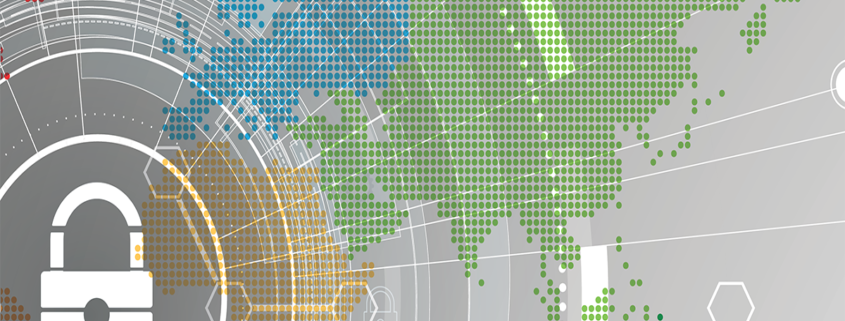Tag Archive for: starts
Samsung Galaxy S21 Ultra Starts Receiving New Update In India With Nov 2021 Security Patch
/in Mobile Security
|
Samsung Galaxy S21 Ultra users in India can now update their devices to the latest Android 11 update. The new OTA update (Build- G998BXXS3AUJ7/G998BOXM3AUIE/G998BXXU3AUIF) measures 222.97MB and brings the November 2021 security patch to the premium Galaxy smartphones alongside some minor bug fixes and device stability improvements. The official changelog of the new software update only mentions the security enhancements of the flagship Galaxy handset.

Notably, the latest software update was rolled out to Galaxy S21 Ultra users in Germany on November 25. It might be the last incremental update before the Galaxy S21-series handsets receive the official Android 12 update. The Galaxy S21-series devices have so far received three One UI 4.0 beta updates.
If you own the premium Samsung Galaxy S21 Ultra, you should receive a notification for the new OTA build.
You can manually check for the update from the ‘Software Update’ section. Since it’s an incremental update, the process shouldn’t take much of your time and internet data.
Meanwhile, if you are waiting for the major Android 12 update, here’s some must check out features of the One UI 4.0 coming to your Samsung handset. The One UI 4.0 brings at last 50+ new features to the Galaxy S21-series handsets.
• Redesigned Home screen widgets including a new Weather App and YouTube, Spotify widget with better controls
• Smoother and more intuitive animations
• Android 12’s Privacy Dashboard
• Redesigned Quick Panel
• Upgraded Dark mode
• New Charging animation
• Revamped Samsung keyboard
• Cleaner & simpler Camera layout with intuitive Pro mode
• Useful additions in the native Gallery app
• New features in the native photo/video editor
Besides, several new features and tweaks have been added to the One UI 4.0. Sadly, the One UI 4.0 won’t offer the Google Pixel’s Material You design language. The best we can expect from Samsung is to offer some Material You wallpapers and the feature-packed theme engine for a range of customization features to the Galaxy users.
If you can’t wait for the official One UI 4.0 update, you can register for the One UI 4.0 beta…
IT security starts with knowing your assets: Asia-Pacific
/in Computer Security
A perfect example of remote-work security challenges occurred when an NTUC employee accidentally downloaded malware onto a laptop he was using to access corporate files by plugging in a personal USB drive. “We received a security alert right away, but the remediation was tough,” recalls Loe. “We actually had to send a cybersecurity staffer to the employee’s house on a motorbike to retrieve the computer for investigation. In the past, we could protect the network by simply cutting off the employee’s laptop access. But when an employee is working from home, we can’t take the chance of losing any data over the internet.”
Welcome to the new cybersecurity threat landscape, where 61% of organizations are increasing cybersecurity investment in the work-from-home pandemic era, according to a 2021 Gartner CIO Agenda survey. Remote workers rely on cloud computing services to do their jobs, whether it’s corresponding with co-workers, collaborating on projects, or joining video-conferencing calls with clients. And when information technology (IT) teams, now at a physical remove, are not responsive to their needs, remote workers can easily shop for their own online solutions to problems. But all that bypasses normal cybersecurity practices—and opens up a world of worry for IT.
Yet for many regions of the world, remote work is just one of many factors increasing an organization’s exposure to cybersecurity breaches. The Asia-Pacific region is no exception, where 51% of organizations surveyed by MIT Technology Review Insights and Palo Alto Networks report having experienced a cybersecurity attack originating from an unknown, unmanaged, or poorly managed digital asset.
Conducting a full inventory of internet-connected assets and rebooting cybersecurity policies for today’s modern remote work environment can mitigate risks. But organizations must also understand the cybersecurity trends and challenges that define their markets, many of which are unique to organizations operating in the Asia-Pacific.
To better understand the challenges facing today’s security teams in this region, and the strategies they must embrace, MIT Technology Review Insights and Palo Alto…
Juniper breach mystery starts to clear with new details on hackers and US role
/in Computer Security
Days before Christmas in 2015, Juniper Networks Inc. alerted users that it had been breached. In a brief statement, the company said it had discovered “unauthorized code” in one of its network security products, allowing hackers to decipher encrypted communications and gain high-level access to customers’ computer systems.
Further details were scant, but Juniper made clear the implications were serious: It urged users to download a software update “with the highest priority.”
More than five years later, the breach of Juniper’s network remains an enduring mystery in computer security, an attack on America’s software supply chain that potentially exposed highly sensitive customers including telecommunications companies and U.S. military agencies to years of spying before the company issued a patch.
Those intruders haven’t yet been publicly identified, and if there were any victims other than Juniper, they haven’t surfaced to date. But one crucial detail about the incident has long been known — uncovered by independent researchers days after Juniper’s alert in 2015 — and continues to raise questions about the methods U.S. intelligence agencies use to monitor foreign adversaries.
The Juniper product that was targeted, a popular firewall device called NetScreen, included an algorithm written by the National Security Agency. Security researchers have suggested that the algorithm contained an intentional flaw — otherwise known as a backdoor — that American spies could have used to eavesdrop on the communications of Juniper’s overseas customers. NSA declined to address allegations about the algorithm.
Juniper’s breach remains important — and the subject of continued questions from Congress — because it highlights the perils of governments inserting backdoors in technology products.
“As government agencies and misguided politicians continue to push for backdoors into our personal devices, policymakers and the American people need a full understanding of how backdoors will be exploited by our adversaries,” Senator Ron Wyden, a Democrat from Oregon,…



